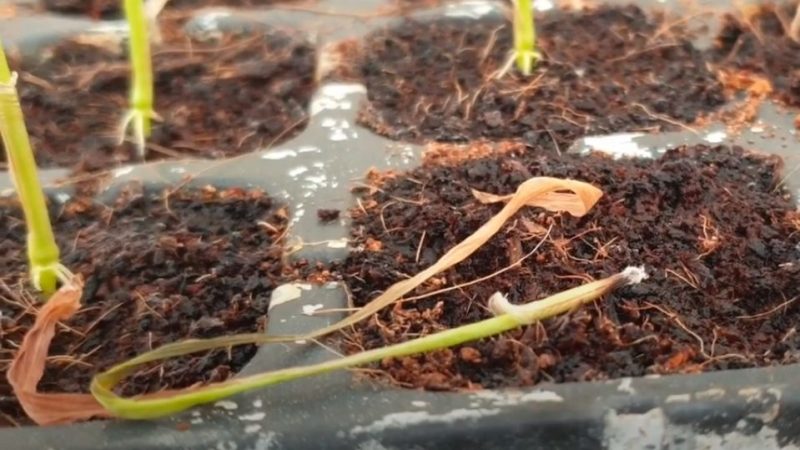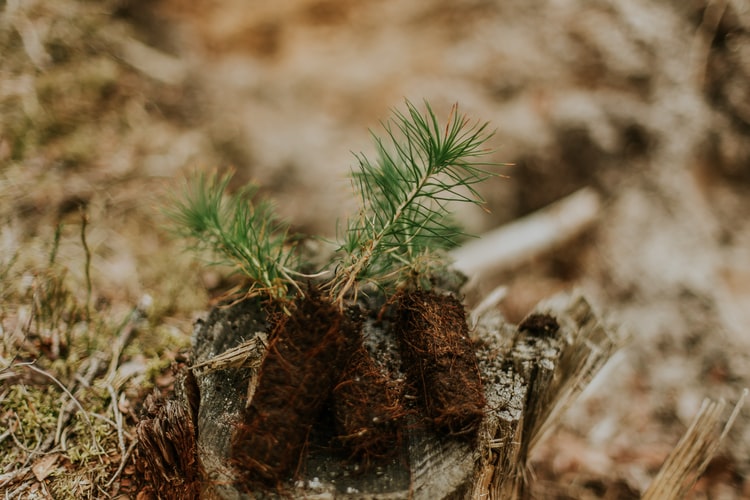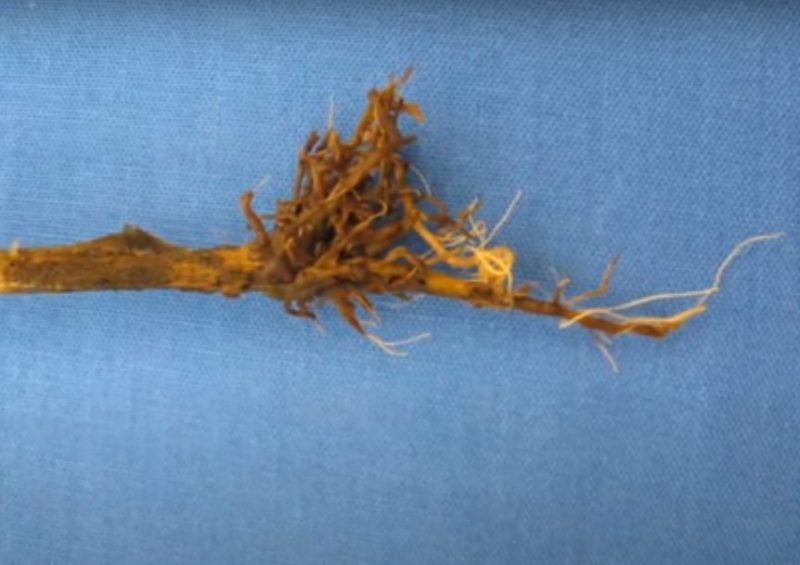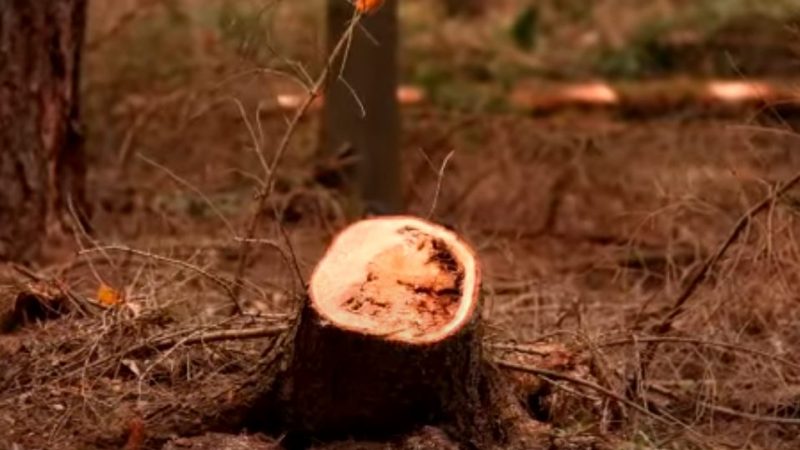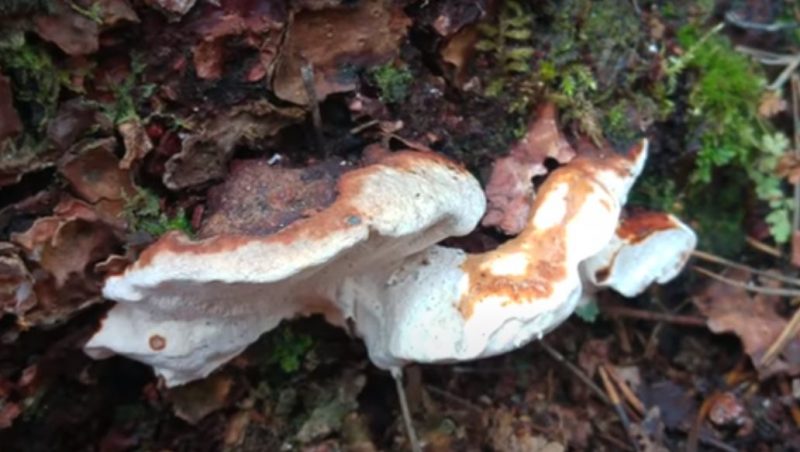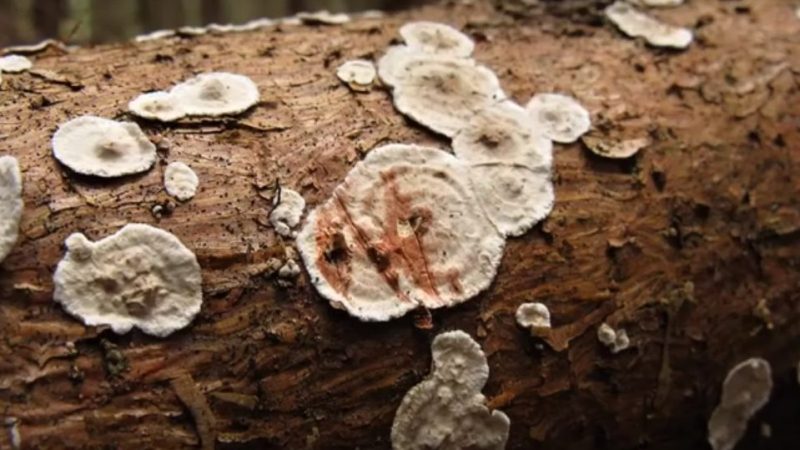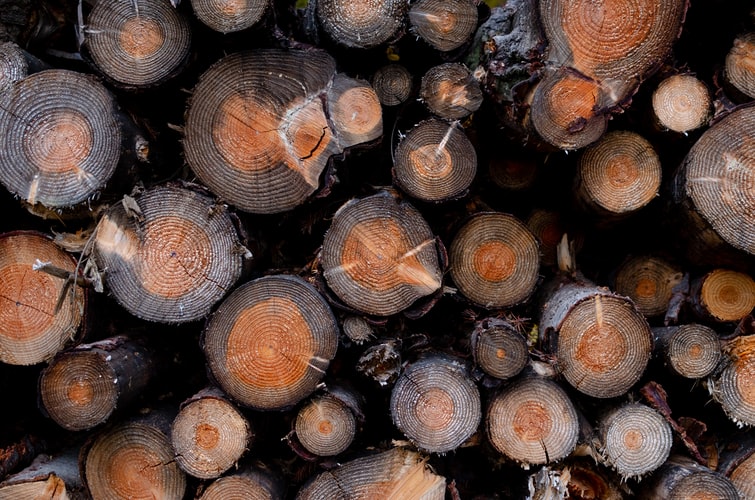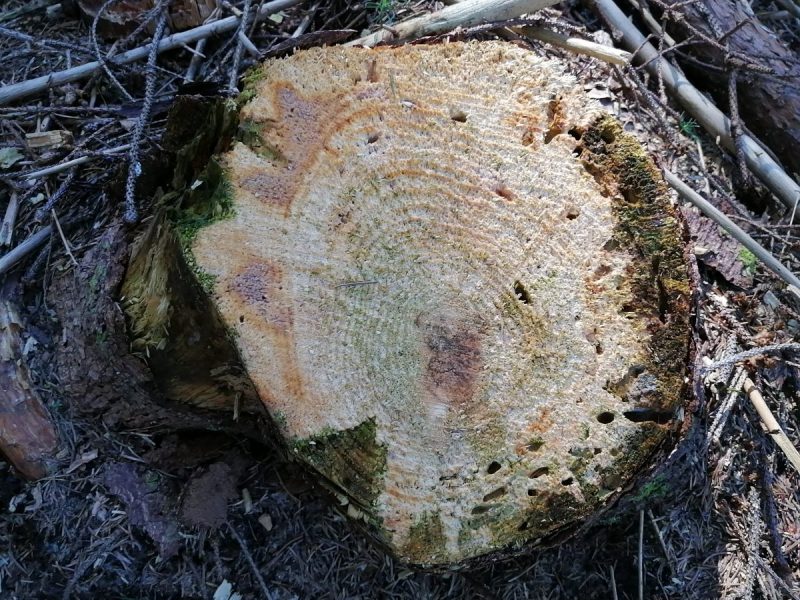Conifer diseases: wood and root decay
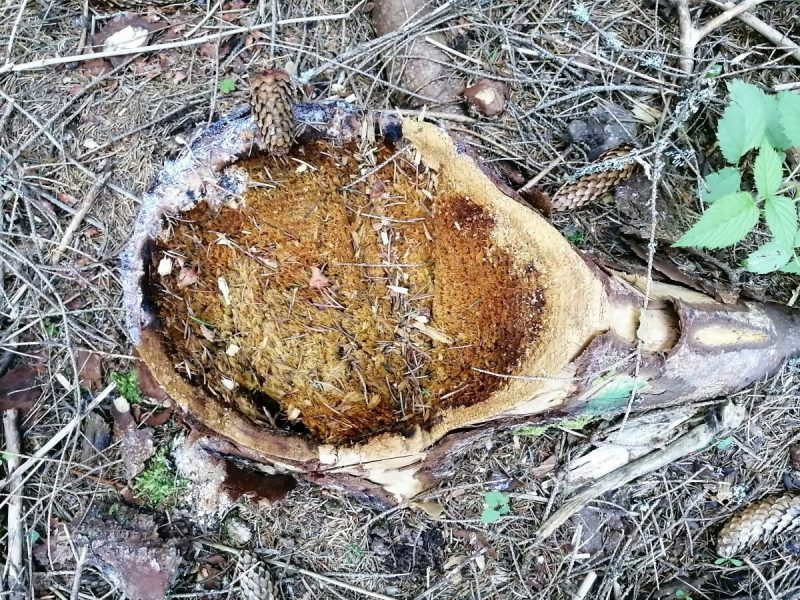
Most pathogens that cause conifer decay, thrive and propagate in conditions of high humidity and high temperatures. Among the conifer decay diseases that affect the trunk, wood, and root, the most common are:
1. Damping-off of seedlings (Pythium sp., Fusarium sp., Phytophthora sp.)
Damping-off or perishing of conifer seedlings may be based on the presence of pathogens, such as Pythium sp., Fusarium sp., Phytophthora sp., and others. These conifer decay diseases are frequently observed in forest nurseries and greenhouses.
Host plants. Conifers in glasshouses, greenhouses, tree nurseries, plantations, and natural regenerations.
Symptoms. Infections most often occur in the first two months after sowing. Excess or lack of moisture in the soil, respectively high temperatures favor the spread of pathogens. The evolution of the disease in these conditions is fast, in a few days the crops can be completely compromised. Since these pathogens are located in the soil and at ground level, the first symptoms are often unnoticed: blackening of the roots, browning of the stem, root rot. As the disease progresses, the stems turn brown and break at ground level, the needles turn yellow, the seedlings dry out or rot – depending on the species and the humidity conditions.
Prevention and control measures.
- soil disinfection and soil replacement with uncontaminated soil;
- keeping the soil aeration (by loosening it periodically);
- use of acidic soil (pH below 7), as much as possible (pathogens do not prefer acidic soils);
- keeping the air temperature below 25℃;
- avoiding excess moisture in the soil;
- use of water with a temperature close to the soil temperature (in case of watering);
- seed treatments before sowing;
- specific chemical treatments on seedlings.
Recommended products
-
You can find products on a different store
Change Store -
You can find products on a different store
Change Store -
You can find products on a different store
Change Store -
You can find products on a different store
Change Store -
You can find products on a different store
Change Store -
You can find products on a different store
Change Store -
You can find products on a different store
Change Store -
You can find products on a different store
Change Store -
You can find products on a different store
Change Store -
You can find products on a different store
Change Store -
You can find products on a different store
Change Store -
You can find products on a different store
Change Store -
You can find products on a different store
Change Store -
You can find products on a different store
Change Store -
You can find products on a different store
Change Store -
You can find products on a different store
Change Store -
You can find products on a different store
Change Store -
You can find products on a different store
Change Store -
You can find products on a different store
Change Store -
You can find products on a different store
Change Store -
You can find products on a different store
Change Store -
You can find products on a different store
Change Store -
You can find products on a different store
Change Store -
You can find products on a different store
Change Store
2. Root rot of seedlings (Rhizoctonia sp., Phytophthora sp., Fusarium sp., Rosellinia inflata)
Root rot is one of the conifer decay diseases, often found in greenhouses and plant nurseries, as well as in plantations and natural regenerations. The damage generally occurs in the spring and can result in losses of 30-60% of seedlings production.
Host plants. Conifer seedlings.
Symptoms. Discoloration or redness of the needles, staining of the stem, blackening of the roots, and finally drying of the seedlings. In the case of Rosellinia inflata attack, the discoloration of the needles starts at the top of the seedling and advances towards its base. Sometimes white or gray circles (rings) can be seen on the stem (at ground level). In the case of Phytophthora sp. attacks, the rotting and blackening of the stem at ground level can be observed.
Prevention and control measures.
- soil disinfection before sowing;
- periodic observations at the level of the roots of some seedlings from the greenhouse or plant nursery;
- avoiding excess moisture in the soil;
- ensuring good soil drainage;
- protecting seedlings from shading during the summer;
- removal of affected seedlings;
- performing specific chemical treatments.
Recommended products
-
You can find products on a different store
Change Store -
You can find products on a different store
Change Store -
You can find products on a different store
Change Store -
You can find products on a different store
Change Store -
You can find products on a different store
Change Store -
You can find products on a different store
Change Store -
You can find products on a different store
Change Store -
You can find products on a different store
Change Store -
You can find products on a different store
Change Store -
You can find products on a different store
Change Store -
You can find products on a different store
Change Store -
You can find products on a different store
Change Store -
You can find products on a different store
Change Store -
You can find products on a different store
Change Store -
You can find products on a different store
Change Store -
You can find products on a different store
Change Store -
You can find products on a different store
Change Store -
You can find products on a different store
Change Store -
You can find products on a different store
Change Store -
You can find products on a different store
Change Store -
You can find products on a different store
Change Store -
You can find products on a different store
Change Store -
You can find products on a different store
Change Store -
You can find products on a different store
Change Store
3. Tree root rot (Armillaria sp. – honey fungus, dark honey fungus)
Armillaria species cause damage to both deciduous and coniferous trees. Due to the presence and activity of the fungus, the amount of wood assimilated annually is reduced, its quality is affected, or even a complete drought of trees is induced. The main species found on conifers is Armillaria ostoyae (dark honey fungus or wood decay of conifers), but other species of Armillaria can also induce conifer decay.
Host plants. All conifer species.
Symptoms. The first symptoms of the presence of pathogens are often unnoticed: patches of creamy white mycelium on the roots, under the bark, or at the base of trees. Also, white or brown rhizomorphs are present in the soil. Later, the fruiting bodies (mushrooms) appear at the surface, and wood rot develops. Root rot can also advance on the trunk, up to heights of 50-60 cm. Reduction of shoot growth, reddening of the needles, and resin leakages (especially at the base of the trunk) can also be observed. Abundant fruiting is often observed on the severely affected trees, followed by drying out.
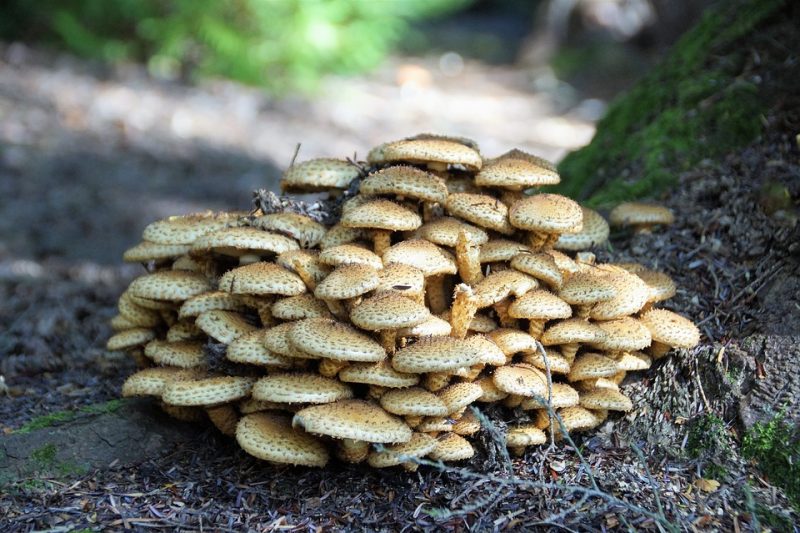
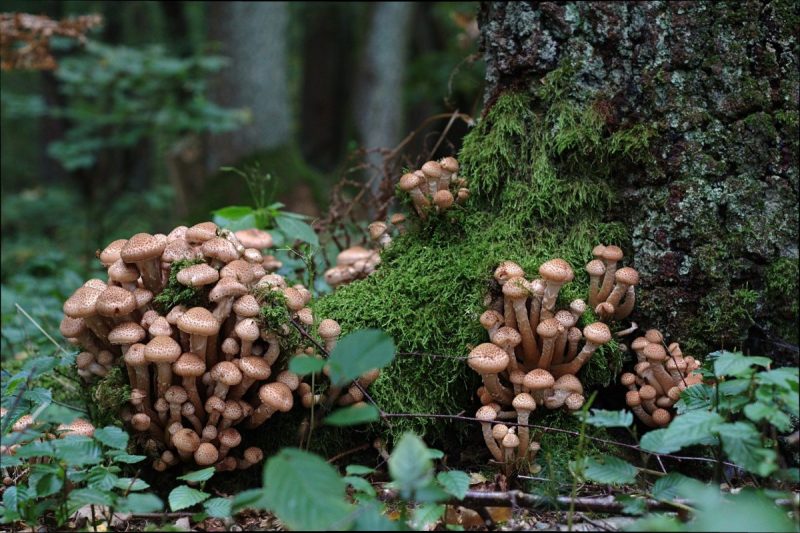
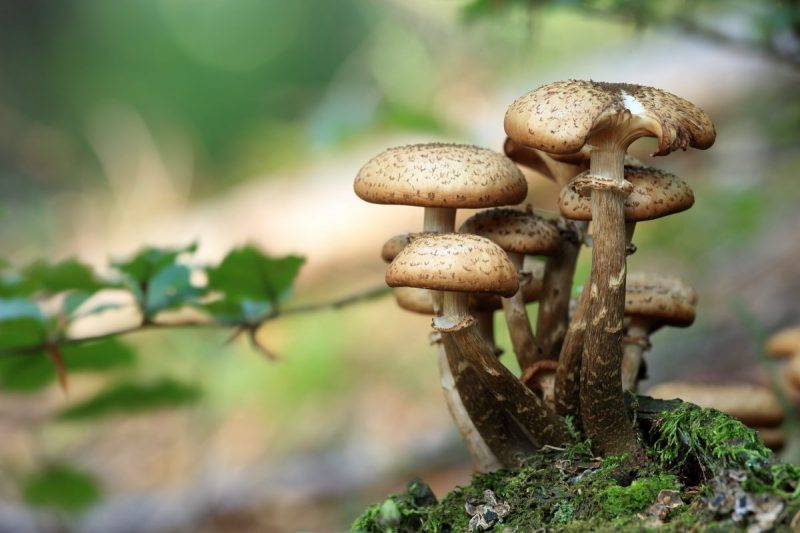
Prevention and control measures.
- maintaining the health of trees;
- ensuring an optimal distance between the trees;
- enhancement of mixed stands (conifers and deciduous trees);
- avoiding excess moisture in the soil;
- removal of affected trees.
4. Heart rot of conifers (Heterobasidion sp.)
This disease of conifers is also known as ‘red rot of conifers’, or ‘butt rot of conifers’, the pathogens being commonly found in softwoods. It can cause rot to 30-35% of the total wood mass of a tree.
Host plants. Pine, spruce, fir, juniper, duglas-fir, larch, and other species.
Heterobasidion annosum is most frequently found on pine trees, Heterobasidion parviporum on spruce trees, and Heterobasidion abietinum on fir trees.
Symptoms. In the presence of pathogens, the base of the trunk thickens and cracks, and resin leaks on the trunk. Over time, the rot advances from the roots to the base of the trunk, reaching heights of 1-10 m. When hitting the trunk with different tools (eg. hammer), the sound is specific, dull, muffled, suffocated. The infection is often detected only when the fruiting bodies appear (basidiocarps, conks).
Prevention and control measures.
- maintaining the health of trees;
- ensuring an optimal distance between the trees;
- avoiding trunk injuries;
- removing dry, fallen, infested trees;
- removing stumps or treating them with specific fungicides.
5. Root rot and rot of the base of the trunk (Sparassis crispa, Phaeolus schweinitzii, Onnia tomentosa)
Sparassis crispa is known as the ‘cauliflower fungus’, Phaeolus schweinitzii is known as the ‘heart rot of pine’ or the ‘butt rot of pine’, and Onnia tomentosa is known as the ‘woolly velvet polypore’. These fungi can colonize both seedlings and mature trees. As a result of the attack, the trees become weak, unstable, prone to wind or snow damage. The woody material losses are also significant.
Host plants. Conifers. Sparassis crispa mainly on Scots pine.
Symptoms. Fungi infest the roots and the soil, then advance to the base of the trunk, causing rot. Rot can advance on the trunk up to a height of approx. 3 m. The fruiting bodies appear near the thick roots, on the ground, or the stumps. The fruiting bodies of Sparassis crispa are edible.
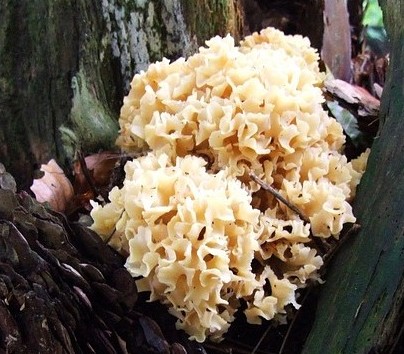
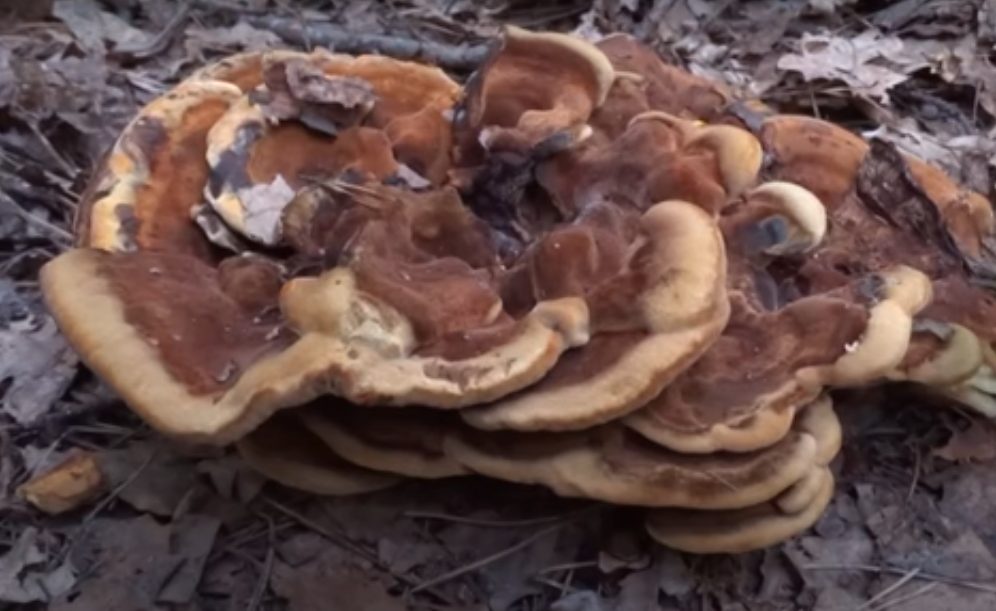
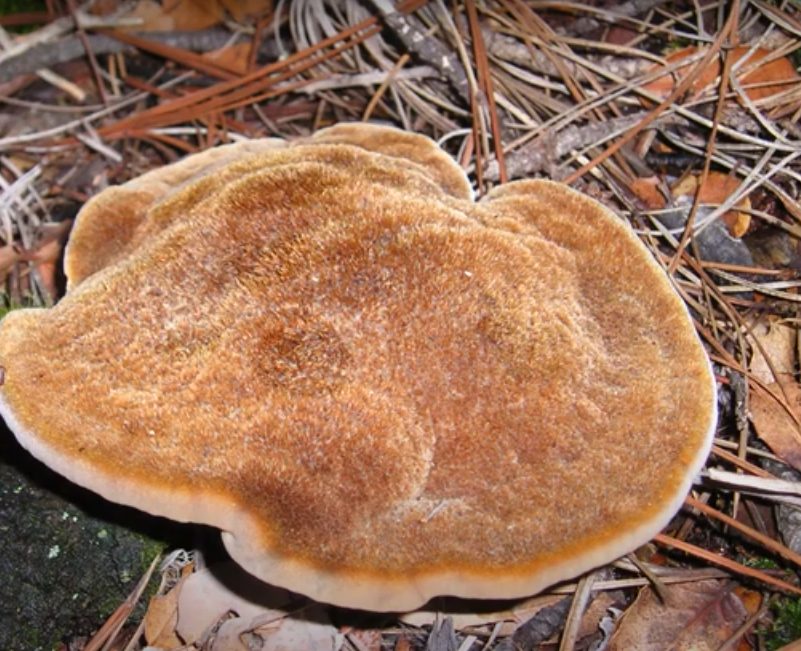
Prevention and control measures.
- maintaining the health of trees;
- ensuring an optimal distance between the trees;
- avoiding trunk injuries;
- removing dry, fallen, infested trees;
- removing stumps or treating them with specific fungicides.
6. Wood decay (Phellinus sp., Ganoderma sp., Trametes hirsuta)
These wound or stump parasites can affect the quality of the wood by 60-65%. Degradation occurs due to the decomposition of the constituent elements of wood (cellulose and lignin) by parasites. Discoloration phenomena occur in the wood, and the mechanical resistance of the trees is affected.
Host plants.
- on conifers:
- brown rot of conifers (Porodaedalea pini) – especially on spruce, fir and pine;
- heart rot of fir (Phellinus hartigii) – on fir, rarel on spruce;
- shelf fungus (Ganoderma applanatum) – usually on deciduous trees, less often on conifers;
- butt rot of trees (Ganoderma lucidum) – usually on deciduous trees, less often on conifers;
- hairy bracket (Trametes hirsuta) – usually on deciduous trees, less often on weakened conifers.
Symptoms. The presence of these pathogens can be visually observed very late, when the wood is already partially degraded and various changes occur on the surface of the trunk: irregularities on the trunk, wounds, exfoliation of the bark, etc. When hitting the trunk with different tools (eg. hammer), the sound is specific, dull, muffled, suffocated. The fruiting bodies (conks) appear on the trunk of the affected trees, less often on the thick roots.
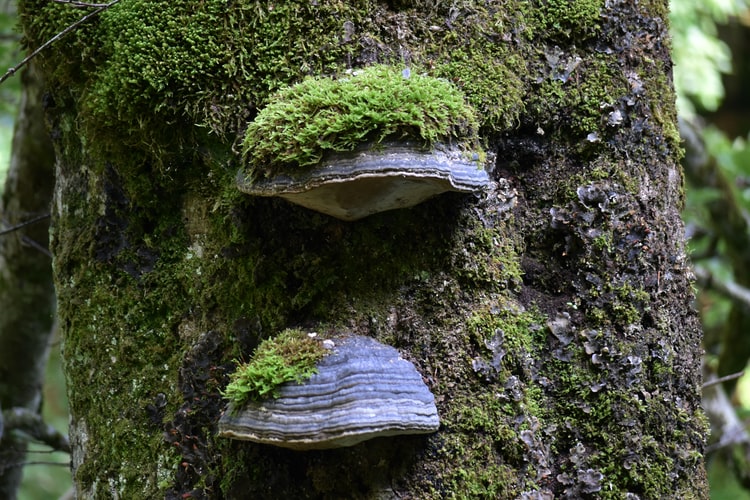
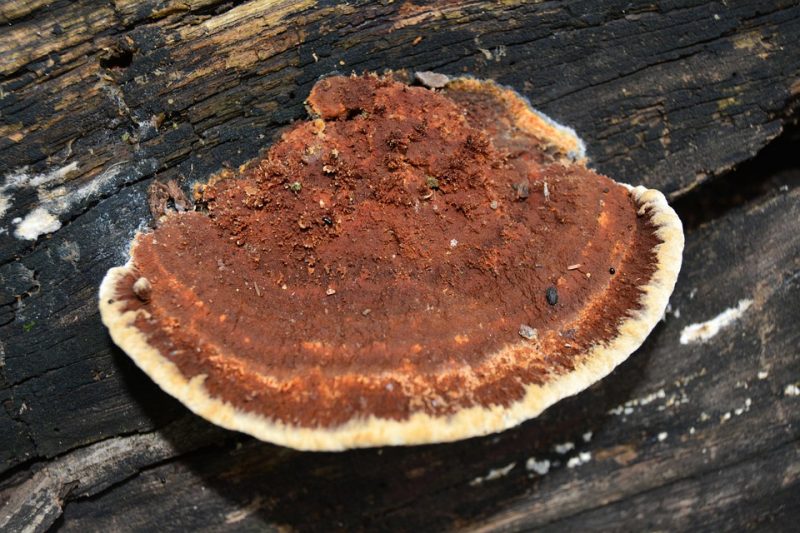
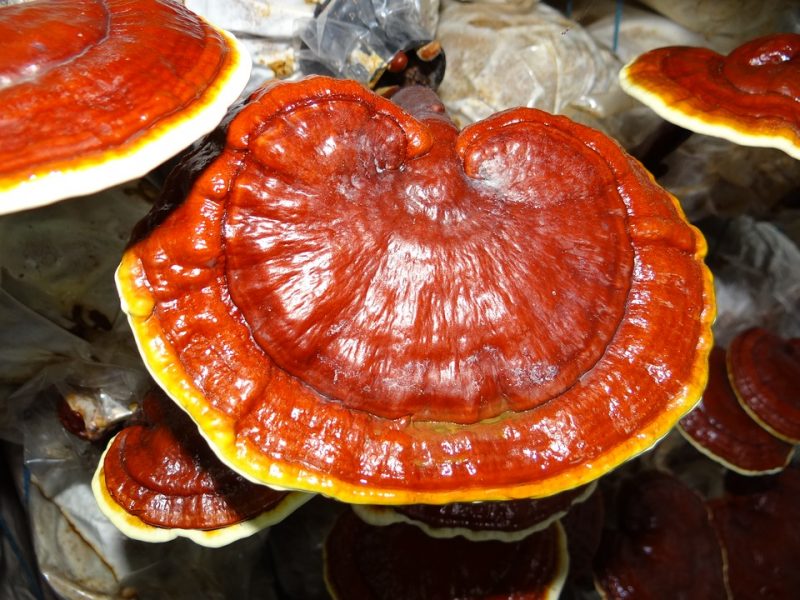
Prevention and control measures. It is very difficult to control the spread of these conifer decay diseases, so preventive measures are mostly recommended:
- avoiding trunk injuries;
- treating wounds on the trunk with chemical or biological substances;
- removing of broken, felled, infested trees;
- removing (as much as possible) the stumps, or treating them with specific fungicides.
7. Bleeding conifer crust (Stereum sanguinolentum)
Stereum sanguinolentum produces heart rot of conifers by decomposing the constituent elements of wood.
Host plants. Conifers, especially spruce and pine;
Symptoms. The pathogens penetrate the wood through various wounds and cause chromatic alterations and rot. Stumps and felled logs are sources of infestation. The rot expands annually in wood by approx. 20 cm, decreasing the resistance of the tree. In the affected area, drying and exfoliation of the bark can be observed. Fruiting bodies appear in groups on the infested area or deadwood (stumps, fallen logs). Most frequently, the fruiting bodies are localized on the shaded areas of the trunk. They have a light color (especially at the edges) and become reddish if being touched, or in contact with water.
Prevention and control measures. The control measures are very difficult and unprofitable. In some cases, the spread of rot can be limited by injecting fungicides into the wood. Preventive measures are much more important:
- avoiding trunk injuries;
- treating wounds on the trunk with chemical or biological substances;
- removing of broken, felled, infested trees;
- removing (as much as possible) the stumps, or treating them with specific fungicides.
8. Blue stain of logs and timber (Ophiostoma sp.)
It is also known as the ‘bluing of pine wood’. The damages caused by this fungus are considered wood defects. It infects both deadwood (including processed wood: lumber, furniture, etc.) and living trees. Trees are infested through existing wounds or dry branches.
Host plants. Conifers.
Symptoms. The attacked live trees lose their vigor, become prone to windthrows, snow damages, and bark beetle attacks. The wood becomes blue after the installation and spread of this conifer decay disease.
Prevention and control measures
- avoiding trunk injuries;
- treating wounds with chemical or biological substances;
- maintaining the health of the trees, by ensuring an optimal distance between the trees;
- removing the broken, fallen, infested trees;
- removing stumps or treating them with specific fungicides;
- in the case of logs: transport and processing as fast as possible, storage in well-ventilated places.
IMPORTANT:
- Treatments can be performed at any time of the year, if at the time of application and in the following hours there is no precipitation. Also, the temperatures should not be very high and there should be no danger of frost in the air.
- Drying symptoms can often occur shortly after planting; these can be caused by non-compliance with the planting period or by the purchase of plants with problems right from the nursery. It is recommended to carefully check the dendrological material before purchasing.
- When purchasing seedlings, it is recommended to check the roots. They should not be sectioned.
- Excessive watering of conifers can impede water drainage and air circulation to the roots, causing suffocation.
- The land around the conifers should be kept clean, free of weeds and grass.
- Coniferous trees and shrubs prefer permeable soils, which allow good water drainage. If the planting is done in compact soil, aeration work (soil loosening) has to be carried out periodically.
- For a successful planting, it is recommended to plant conifers in the sapling stage (seedling).
- To reduce the stress caused by planting, it is recommended to apply biostimulators.
- Sprinkler irrigation sistems shoud be avoided in the case of conifers.














































































































































































































































































































































































































































